This is a reposted article originally written for Positive Feedback by our friend Rush Paul. The great team at Positive Feedback, as well as Rush himself, have kindly given us permission to repost this and you can find the original article at this link.
Thanks to Rush the PF team!
Continuing the conversation about what I’ve found recently that you might also be interested in checking out. Starting off with two very excellent releases from Yarlung Records, both in Pure DSD256, and then moving to Karina Canellakis’ excellent new Bartok Concerto for Orchestra in her premier recording release as a conductor, the marvelous 2014 release from 2L of the TrondheimSolistene performing Magnificat, three further recordings from Yarlung Records by the exceptional percussion ensemble Smoke & Mirrors, and, and, and…
A recent Pure DSD256 release from Yarlung. The sonics in the recordings of solo piano pieces are outstanding. Nathan Ben-Yehuda is a compelling young pianist (Julliard graduate) whose performances of Ravel’s Gaspard de la Nuit and Knussen’s Variations are simply among the best (if not THE best) I’ve heard.
A very special treat is Ben-Yehuda’s performance of Villa-Lobos’ Rudepoêma, about which Ben-Yehuda writes: “Inspired by his friendship with Arthur Rubinstein, Villa-Lobos intended the work to be an intimate portrait of the pianist’s temperament. The brutality in this work can be especially shocking to people familiar with the nobility and elegance of Rubinstein’s recordings; indeed Rudepoêma demonstrates a raw, often violent character.”
Overall, the performance are well done, powerfully performed—Ben-Yehuda is a young artist to watch. I will certainly be paying attention to any new recordings from him.
The recording quality is also top-drawer, just as I’ve come to expect from Bob Attiyeh’s recordings. The Pure DSD256 sonics are open, clear and detailed, with great resolution of the timbre of the Steinway grand piano played here.
The last two tracks are with Astral Mixtape, is a quartet in which Ben-Yehuda plays and they were invited to contribute two performances to the album. Yarlung says “We are so proud to announce the debut release on Yarlung Records of the brilliant young pianist Nathan Ben-Yehuda together with his classical-fusion ensemble Astral Mixtape. Nathan has curated a fascinating program, creating an expansive sound world spanning the centuries.”

I last heard Paul Livingstone, sitar, and Pete Jacobson, cello, in the Yarlung release of Sangram (Confluence: Music from Inside the Heart of Raga), review HERE. This new outing by the duo builds upon what I so much enjoyed in that earlier album—it’s a pleasure to welcome them once again to my listening room. The performances are a blending of traditional raga and improvisations incorporating western music elements. The combination of sitar and cello really work well for me. When Ann listened, she said simply, “Oh, I really like this.”
As with Sangram, this is a Pure DSD256 recording with a single stereo microphone. Its as pure as pure gets. Just the musicians, their instruments, and us as listeners. Highly recommended.
This release continues NativeDSD’s gradual release of the Reference Recordings catalog of albums recorded in PCM rates lower than DXD (see HERE). In this release we have a very lovely and entertaining recital by the Quartet San Francisco recorded by “Prof” Keith Johnson May 14-16, 2018 at Skywalker Sound. The music selected by QSF encompasses a range of styles reflecting their love for the string quartet in all it’s many variations. Beginning with Jeremy Cohen’s Tango Eight, then Helmut Lispsky’s Fiesta!, and continuing with an arrangement of Gershwin’s Rhaspsody in Bluegrass, this is a most enjoyable romp. The music is light, tight and fun. QSF member Jeremy Cohen has either composed or arranged the majority of works performed, and his touch is most engaging and very welcome here in our home.
Did I say this album was fun!? Yes, it is. Fun, entertaining, occasionally impish, and nicely diverse—just an overall good time.
Plus, it is beautifully recorded. One of “Prof” Johnson’s best efforts, in my opinion. The 24/176.4kHz digital resolution is clean, open, extended and very dynamic. This is the sound of a string quartet captured delightfully well.
This album opens with Philip Glass’ (b. 1937) The American Four Seasons (Violin Concert No. 2), which was composed in 2009. The work is inspired by Antonio Vivaldi’s famous set of violin concertos, The Four Seasons, but Glass offers his own unique interpretation and contemporary take on the concept. Written in four movements, each representing a different season, Glass infuses his minimalist style and repetitive motifs into the composition. Violinist Sara Övinge provides a master’s class in violin performance with tremendous technique and full-on, take-no-hostages, drive. She delivers the full package in performing the demanding, virtuosic and intricate solo violin passages–just Wow! The Norwegian Chamber Orchestra provides a rhythmic, fully complementary orchestral backdrop. (And, as a side note, you could have knocked me over with a feather when telling me this work was composed by Philip Glass. This composition is winning me over!)
The second work on this album is the Violin Concerto No. 1 “Patientia” by Kjetil Bjerkestrand (b. 1955). This is music I found myself coming back to several times over the weeks after I first listened to it. And each time, I found more to appreciate. It has layers upon layers of musical complexity to explore and to come to grips with. Each new listening session was rewarding as I became more aware of the warp and weave of his design. There is an underlying strength to this work, beyond the rhythmic complexity, that I’ve come to find most gratifying.
The accompanying booklet has an in-depth discussion of the construction of Bjerkestrand’s music. If I were a musician or musical theorist, I might begin to understand the technical explanation. But, I’m just a listener. However, one thing the booklet says that resonates with me is: “However technical this may sound, Kjetil manages to distill a music of his own which seems both familiar and foreign; instantaneous, yet profound. Where many would succumb to the saccharine and pathos-filled, he creates an undercurrent of something that, for want a better definition, I would call a sensitive matter-of-factness.”
And yes, here it is. There is a fundamental profundity to this composition. The simplicity of certain elements is ultimately overtaken by this undercurrent. The music is therein both complex and ultimately quite straight-forward and satisfying. So, I encourage you to come back to this music for a second and a third or even a fourth time before passing judgement. I think you will be rewarded, as I have been. As the liner notes describe, “Kjetil manages to distill a music of his own which seems both familiar and foreign; instantaneous, yet profound.”
Sara Övinge is a member of the Norwegian Chamber Orchestra and the contemporary music ensemble Cikada and has been guest Concertmaster for Bergen Philharmonic Orchestra, Kristiansand Symphony Orchestra and the Norwegian Radio Orchestra. I look forward to hearing more performances from her.
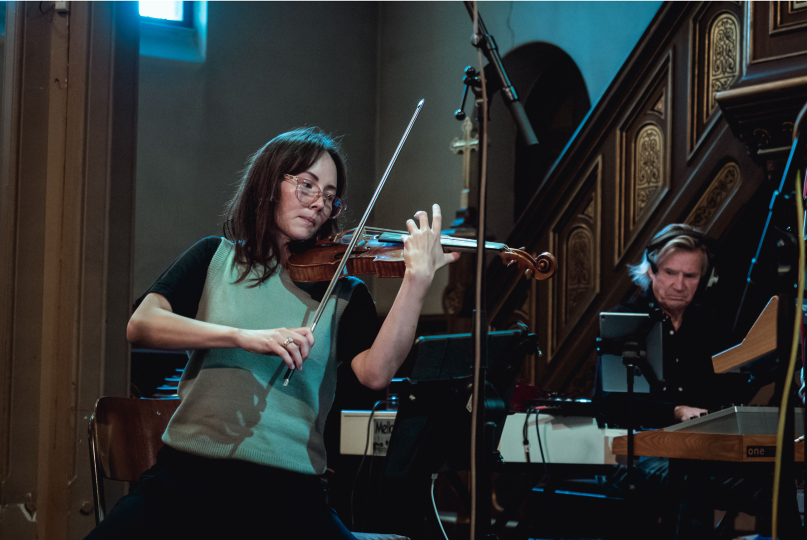
Beautiful and extraordinary. These were my first reactions on listening to this new recording by Karina Canellakis in her recently appointed position as Chief Conductor of the Netherlands Radio Philharmonic Orchestra. As I continued listening, I found her fully exploring the extensive range of emotions to be found in these two orchestral works by Bartok. But her approach is not to hit one over the head. Instead, she slides in from the edges, sneaks up on you, then brilliantly clobbers you with full orchestral impact or with dry, sly wit—as the music may demand. And then she may completely surprise with the most beautiful lyricism one may hope to hear. And this is Bartok! In a full ration of different dimensions to these compositions.
Bob Attiyeh of Yarlung Records has written a penetrating and thoroughly enjoyable review of this album. His insights and commentary go well beyond my ken. All I can say is that I completely agree with his comments. I encourage you to read his full review and discussion posted in the NativeDSD blog HERE.
This album surprised the dickens out of me—and delightfully so. Canellakis is off to a tremendous start in her conductorial role with the NRPO. Perhaps, as Bob Attiyeh suggests, her long familiarity as a violinist playing the music of Bartok has developed in her insights that only those deeply immersed in his music might achieve. I will get very interested to hear more of her work as a conductor. If you know and love the recordings of Concerto for Orchestra by Reiner (HERE) or Dorati (HERE) or Leinsdorf (HERE), then you should indulge yourself in yet another top drawer performance that brings yet a slightly different perspective on the music.
Pentatone’s recording is top notch. Producer and recording engineer Everett Porter is not a name I know, but he has delivered a superb piece of work in this recording. I will definitely be watching for his name in production credits in the future.
Strongly recommended in the most urgent way! If you love orchestral music of the twentieth century, this recording should be in your collection.
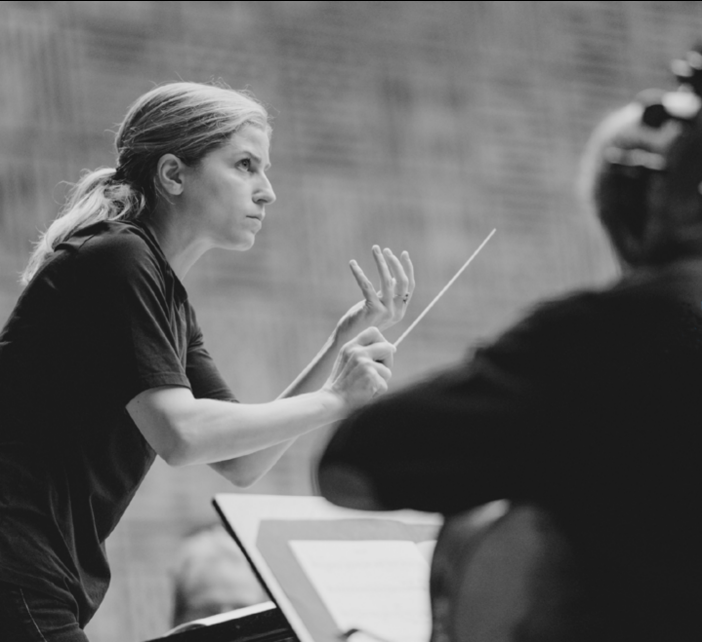
Ye Olde Editor, Dr. David, has commented about this recording before (HERE), but this is the first time I’ve listened to it. And I should have done so much earlier! It is magnificent and very beautiful. Morten Lindberg outdoes himself with his immersive recording efforts and I’d love to hear it in a full immersive speaker setup. But even in stereo one can hear just how very nicely the acoustic environment of these performers is captured by this recording.
These are late twentieth century compositions for chorus and chamber ensemble. The album opens with the Magnificat by Kim André Arnesen (b. 1980), which is an ethereal work if ever there was one. Arnesen writes about this work, “My Magnificat is therefore a prayer for the sick, the poor, a song for help and hope for those who are struggling.” It is a moving piece. Magnificat was commissioned by the Nidaros Cathedral Girl’s Choir and their conductor Anita Brevik to be performed in the large acoustics of the Nidaros Cathedral, in which we hear it in this recording. Joining the choir is soloist Lise Granden Berg who contributes just brilliantly as her voice rises above and beyond the choir in movingly rendered passages that add value to the whole without distracting from the integral nature of the work.
Two other contemporary composers’ work is also included: Aaron Jay Kernis’ Musica Celestis, and Ola Gjeilo’s Tundra and Song of the Universal. These works move from the contemplative, ethereal sounds of Magnificat (which quite happily embraces the sounds of the baroque and classical periods) into a truly more contemporary choral music aesthetic. They make a nice complement and contrast to Arnesen’s work to flesh out a fully enjoyable choral concert.
For those who enjoy excellent choral music, this is an album well worth seeking out. Beautiful, engaging music that is gorgeously performed—it is simply delightful. As David said so eloquently in his earlier review, which I encourage you to read, “this recording…is a contemplative experience of the very highest order, stunning both spirit and soul with a sweetness and pleasure that reminds me why I love the possibilities of the audio arts so passionately.”
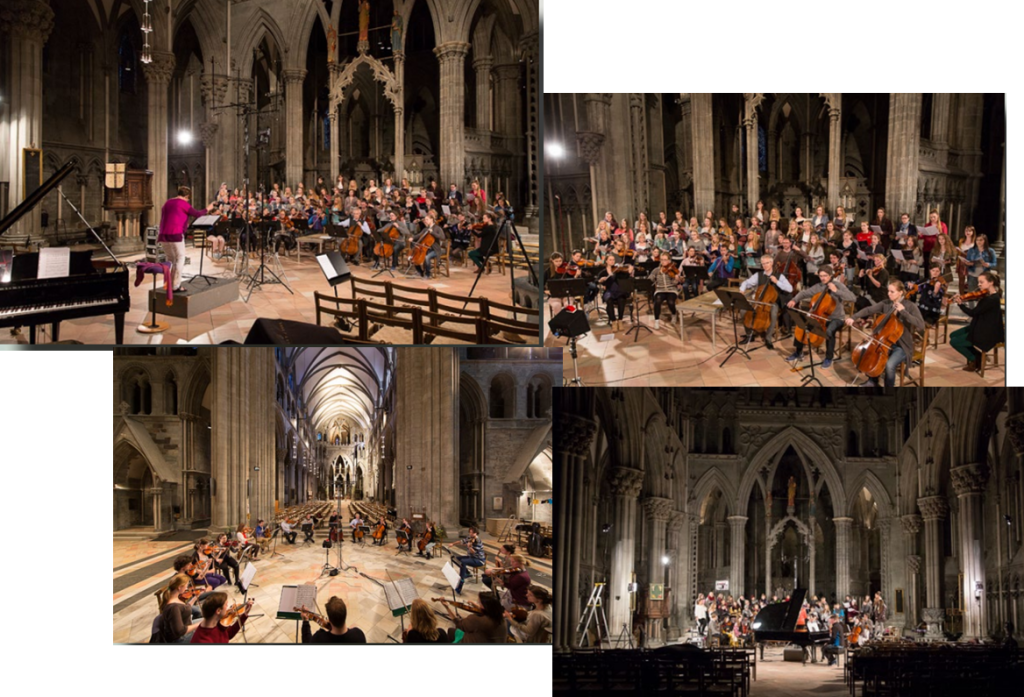
These are delightful performances by the Baroque Ensemble of the Trondheim Symphony Orchestra. Superbly recorded (as always) by Morten Lindberg. Just a complete pleasure to hear!
This album includes a selection of contemporaneous music that is preserved in the Gunnerus Library, Norway’s oldest scientific library, located in Trondheim. Held in the library’s special collections, these manuscripts are reported as probably belonging to the musician Johan Daniel Berlin (1714 – 1789) who was employed in
Trondheim in 1737. The quality and variety of the music illustrates the musical sophistication that existed one of Denmark and Norway’s largest provincial towns in the decades preceding the nineteenth century. It also illustrates the considerable benefits of increasing wealth as merchants set about exporting timber, stockfish, and copper from the mines of the region. As Trondheim’s wealth grew, and it’s merchant class prospered, luxury and the latest fashions, literature and music from the Continent found their way to Trondheim.
If you enjoy music of the Baroque, I encourage you to scoop this album straight up. The music is diverse, enjoyable, and very well played.
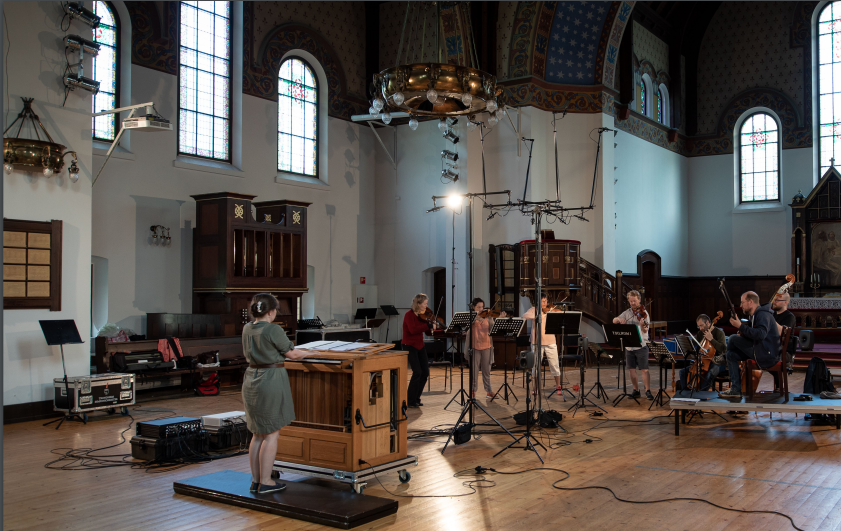
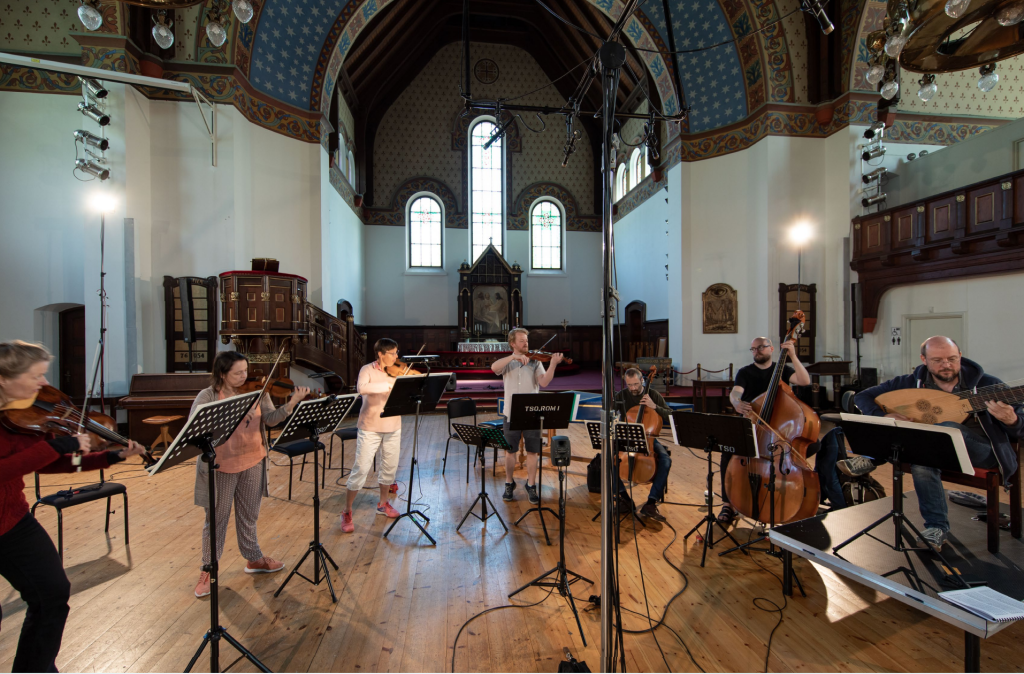
I have a fondness for the early gut strung harps from before the development of pedals. Kit Samara plays a wonderful sounding modern interpretation of a 17th Century “triple” harp built by Rainer Thurau, a harp builder located in Wiesbaden, Germany (HERE). No pedals, no levers, but three ranks of strings to allow for the full chromatic range of sound.
The album opens with a demonstration of the true chromatic capabilities of this instrument with Fabritio Fillimarino’s Canzon Cromatica. This is followed by two lovely works, recorded here on the harp for the first time, by Rinaldo dall’Arpa, a renowned harpist and singer. These works were published as keyboard repertoire, but are beautifully performed here on dall’Arpa’s instrument of personal choice. The four remaining works are by Rocco Rodio, of the Neapolitan school that developed at the Spanish court of Naples during the 17th century. It was a world culturally vibrant and scintillating with new ideas. Rodio fit right in. While being an accomplished and learned theorist, believed that “…our obligation is to a more pleasing and sweet effect than to simply follow rules…”
Together, these piece bring to life another time and another world. And Kit Samara continues to be our most pleasant guide. This is her second album with HR Recordings and it follows nicely after her first recital of sonatas for harp and bass lute by Antonino Reggio with lutenist Konstantin Shenikov, also recommended.
The Viennese concert pianist Paul Wittgenstein lost his right arm at the front in 1914. He persevered with incredible persistence. These works were written for him so that he could continue to perform with composition uniquely crafted to fit his situation. Maurice Ravel’s famous Concerto for the Left Hand was commissioned by Wittgenstein, but is not included on this album.
Dutch pianist Folke Nauta recently lost the use of his right hand due to focal dystonia. As did Wittgensten, Folke Nauta persevered to bring back to audiences the trove of chamber music written for piano with the left hand that Wittgenstein had accumulated up until his death in 1961. Many of these works had been premiered by Wittgenstein in the 1920s and 1930s, but had lain unplayed since then.
There is quite a variety of music and variety of instrument combinations to be found here, from the piano left hand and violin Sonata No. 3 by Joseph Labor, to the Quartet in A major for piano, violin, viola and cello by Hans Gál, to Franz Schmidt’s Quintet in A major for piano left hand, clarinet, violin, viola and cello (itself a massive work of over 72-minutes).
The album opens with Ernest Walker’s Variations on an Original Theme (1933) for piano left hand, clarinet, violin, viola and cello. It is quite an impressive work that I’ve never heard before, which is quite understandable given that it was commissioned by Wittgenstein and then locked away only to be performed by Wittgenstein, who was quite protective of the works he’d commissioned. This is a world premier recording of the Variations on an Original Theme as is the Joseph Labor’s Sonata No. 3 with follows it.
The sound quality of this album is what I’ve come to expect from Tom Peeters in his Cobra Records releases. I feel almost spoiled by the consistent beauty of his recordings as he captures very natural string tone and great piano sound in a nicely resonant acoustic environment. It all sounds like one is present before the performers—just decidedly well done!
This is a rather remarkable album all the way around. I was hesitant as I sat down to listen the first time around. But I am now a full-throated fan of this release! It is really rather remarkable and far exceeded my expectations.
Why was I hesitant? Well, because an hour and eighteen minutes of it is an arrangement for large brass and percussion ensemble of Wagner’s The Ring Cycle—music I love, but which does not always transfer well in arrangements. Here, however, arranger Timothy Higgins has successfully navigated many pitfalls to create an arrangement I thoroughly enjoyed. He writes in the liner notes that his arrangement “is intended to form a largescale symphony for a brass and percussion ensemble. The tone of each opera serves the symphonic format quite well, especially the slow and reflective mood of Die Walküre and the scherzo-like Siegfried.” I think he succeed very well! And the performance by the National Brass Ensemble with conductor Eun Sun Kim truly delivers the goods. This is a performance very much worth hearing.
Also on the album are new works written for brass ensemble: Jonathan Bingham’s (b. 1989) Deified (which was commissioned by the National Brass Ensemble); and Arturo Sandoval’s (b. 1949) Brass Fantasy. Both works receive their premier recordings with this album. And leading off the recital is Richard Strauss’ Vienna Philharmonic Fanfare, written in 1924. Together, these works give us a nice balance of something old, something new and something borrowed. I didn’t find the “something blue,” however.
The recorded sound by the Soundmirror team (producer Blanton Alspaugh, recording engineer John Newton, and mixing & mastering engineer Mark Donahue) is some of the best sound I’ve heard this team deliver. And they’ve delivered some extraordinarily nice sounding recordings.
Jonathan Bingham won the San Francisco Conservatory of Music and San Francisco Symphony’s Emerging Black Composers Project competition with his composition Deified. Composer/trumpet player Arturo Sandoval is a legend in the brass world. Together with Timothy Higgins’ The Ring, these pieces are a showcase the exceptional expressive range that brass and percussion can provide. I think you will enjoy your time listening to this recording over the best sound system you have available to you. Don’t rely on earbuds to hear this album and don’t just go for low res streaming either!
An excellent performance of Tchaikovsky’s Symphony No. 5 is coupled with Erwin Schulhoff’s Five Pieces, newly arranged for large orchestra by Manfred Honeck and Tomáš Ille.
Austro-Czech composer Schulhoff’s (1894 – 1942) career ended in a concentration camp during the Nazi rise in Germany, but not before composing a number of pieces inspired by jazz and dance influences. His 1924 Five Pieces for String Quartet is his most frequently performed work, and it is tremendous fun to hear in this new arrangement for large orchestra. Each of the pieces evokes a different style of dance music:
- Piece 1: Viennese Waltz
- Piece 2: Serenade
- Piece 3: Czech folk music
- Piece 4: Tango
- Piece 5: Tarantella
This creates a framework for Honeck to flex fully the vast resources of a large orchestra, which he seems to revel in doing. What we get as listeners is a playful, often joyful, ride through many styles and cultural flavors all while leveraging a kaleidoscope of changing instrumental timbre and impact, filled with wit and a good bit of parody. The fifth piece, “Alla Tarantella,” is perhaps the best example of all of this. The pieces certainly reflect what Schulhoff wrote in 1919: “Music should first and foremost produce physical pleasures, yes, even ecstasies. Music is never philosophy, it arises from an ecstatic condition, finding its expression through rhythmical movement.” And Honeck/Ille’s arrangement for large orchestra fully engages with this aesthetic. Just get aboard and enjoy the ride!
Tchaikovsky’s Fifth Symphony is, of course, the lengthier work on this album and for some will be the primary reason to consider acquiring the album. Honeck’s interpretation is fresh and lively, with a sinewy strength that I quite enjoyed. Far from being mired in romantic indulgences, this performance lives, breathes, and dances with vigor. It is a welcome addition to my music library. And, still, I’d get the album for the wonderful Schulhoff Five Pieces.
Recorded June 17-19, 2022 at Heinz Hall for the Performing Arts, Pittsburgh, PA, by the Soundmirror team of producer Dirk Sobotka and sound and mastering engineer Mark Donahue, this is another very nice capture of large orchestra sound of a given style of recording. The Soundmirror teams are wizards in post-processing massively multi-miked recordings, as this sounds to be. The tradeoff is a somewhat more “artificial” sound; but, the nature of the hall may have required this approach. Regardless of my sonic quibbles, I fully enjoyed this album and heartily recommend it.
I’m loving this recording. Nicely captured piano sound. Plus, Dávid Báll is just very, very good. And he is definitely the highlight of the album. His Debussy scintillates, dances, ducks and weaves, and keeps one completely engaged to explore what will be coming next. At the same time, this is not light delicate Debussy—Báll plays with a muscular power that reminds me of Ivan Moravec (a high compliment). And, yet, like Moravec, he is able to slip into the most delicate and nuanced of moments. Oh, yes, I am very definitely enjoying the playing of Dávid Báll!
Happily, I understand that Hunnia has scheduled Dávid for a recording of Debussy’s Preludes, Book I, and some Bartok. I can’t wait!
Recording engineer Tibor Lahó seems to have found his groove with this recording. The balance of direct and reflected sound is very nice—the notes of the piano have a very nice extension of harmonics so the full timbre of the piano comes across in the recording. This does not always happen with piano recordings, particularly in studio recordings that don’t have all of the air and reverberation of a large recording hall. But Lahó has managed it all quite nicely here.

How about a wonderful adventure with music of contemporary composers who are still walking amongst us!?! Yes, I love it. I love hearing excellent contemporary music that is clearly “classical” music, no matter how edgy and “way out there” it may be. What is the saying? “All music was modern once…”—Peter Warlock, English composer.
About this album, the Jasper String Quartet write: “The seven pieces on this album represent a collection of treasures we’ve discovered from this century. One of these pieces, Annie Gosfield’s The Blue Horse Walks on the Horizon was written expressly for our quartet. The rest we unearthed as we sifted through the vibrant and varied landscape of music being created today.
“We sought to find a set of pieces that were both enchanting on their own and together represent a cohesive aesthetic. From the immense technical challenges of Judd Greenstein’s Four on the Floor, the meditative contemplation of David Lang’s almost all the time, to the raw emotion and vivid imagery of Missy Mazzoli’s Death Valley Junction, these pieces represent an incredible diversity of sound and style. Yet they all reside comfortably in this wonderful tradition of string quartets, of which we are lucky enough to be a part.”
Caroline Shaw’s Valencia (2012) commences the album, providing a great introduction. It challenges, shakes and invigorates with its syncopated rhythms and abundant pizzicato. Her use of long bow strokes from the cello, occasionally astringent, brings mystery, atmosphere and contrast. At just under six minutes, the work ends almost too soon. I found myself wishing it to continue into another chapter. The more I hear of Shaw’s compositions, the more intrigued and impressed I’ve become.
This is truly a remarkable collection of contemporary music for string quartet. It enlivens me to know that such wonderful music is being composed and performed. And here, each piece stretches the string quartet in new and inventive ways. It is a program of immense originality, innovation and challenge. Highly recommended!
Enjoy a YouTube video of the Jasper performing Shaw’s Valencia and then seek out the full resolution release from NativeDSD to truly hear what is going on in this music:
Solo guitar and voice, but what a nice treat. Hunnia Records tells us that Arif Erdem Ocak “is an astonishing Turkish guitarist and one of the founders of the popular Turkish band, Seksendört. He has been a quintessential member of Budapest’s music scene for years.” Yes, I’d concur that he is quite an astonishing guitarist, and he performs with tremendous presence in this recording. The songs are all written by Ocak as he combines centuries-old Turkish music with a modern, percussive-style of guitar playing to move from contemplative, to raw, to driving dramatic emotions.
Ocak sings in Turkish. I don’t understand a thing. But I’m completely enjoying his performances. There is a flow to his music, his guitar, his voice, that simply carries me right along with him. A classic example of music being the universal language. I’m purely delighted by this album.
I’m listening to the original PCM 88.2kHz files and the sound quality is very good. I just let my DAC handle all of the upsampling internally before it converts to analog. You might prefer to get NativeDSD’s higher resolution files depending on how your DAC processes internally (particularly if your DAC is chip-based).
The album was originally released by Yarlung on LP, and it was a favorite on my music shelves where it stayed in a location easy to pull down to play for audio friends stopping by. Somehow I’ve missed entirely that NativeDSD has a Pure DSD256 transfer from the analog master tapes of this album in their catalog. When I stumble across the listing, I downloaded it immediately. And, wow! What a pleasure to hear this album once again in this superb DSD256 release.
Only three tracks, but each is a warmly welcomed composition by composers Steve Reich, Lou Harrison, and Maurice Ravel. The recording has huge dynamic range, extreme clarity, and tremendous color from the marvelous variety of percussion instruments. This recording will challenge any audio system, but if your system is up for it, you’re in for a great sonic treat.
Transferred from the 15ips 2-track analog master tape to Pure DSD256, this is superb fare.
Also available from NativeDSD is the Pure DSD256 release of a Sound & Mirrors’ Vanish and Vanish Vol. 2. The original has the more engaging mix of music in my opinion, but that’s just my preference. Both are very enjoyable and engaging. If you have one or both volumes of Vanish and like them, you really need to hear this first release—there is no duplication.
“Oh, bother,” said Pooh. Now I’ve prompted myself to play once again the two volumes of Vanish. And they are soooo good. How can one argue with an excellent performance of Takemitsu’s From Me Flows What You Call Time, or Diego Schissi’s Juego de Relojes (Game of Clocks), or Ernst Toch’s Geographical Fugue, or an arrangement of Rachmaninoff’s Vespers? These are all great selections of music for percussion: creative, diverse, and engaging. And the sound quality is simply some of the best available.
If you are purely a music lover, you’ll find these engaging and worth hearing. If you’re also a sound junkie, then you definitely need these Yarlung recordings!
This is an engaging, thoughtful and rather contemplative traversal of works for solo piano by a variety of late nineteenth and twentieth century composers, including Erik Satie, Arvo Pärt, Federico Mompou, Philip Glass, John Cage, and others. The works are lovingly played, with deep sensitivity to the expressive content of each. It is such a pleasure to hear these more modern compositions rather than yet another traversal of the eighteenth and nineteenth centuries. There is nothing jarringly atonal here, all of the works have a charming tonality, frequently with great wit, and always with innovative rhythms and phrasing.
As someone who tends to play whole albums from start to finish, I value an artist who develops a true “recital program” when assembling the included tracks. Here, Marcia Hadjimarkos has done a very nice job of complimenting and contrasting the various pieces she has selected. Her choice to insert Germaine Tailleferre’s Pastoral Inca (1929) in the middle of the complete set of Erik Satie’s Gnoissienes (1897). It makes such a nice contrast and the variety adds interest. And then she delivers another nice complementary contrast with Frederic Mompou’s Música Callada IX following the Satie. And then from Mompou, she slides us into John Cage and Philip Glass—just delightful! Marcia’s intentionality of programming adds so much to my enjoyment of her album.
The works span and slightly overlap the 20th century, with Satie’s Gnossiennes and Danses de Travers dating from the tail end of the 19th century (when the piano used on this recording was built) to Pärt’s Für Anna Maria written in 2006, and the works of Cage, Monk, Tailleferre, Glass, Mompou and Skempton falling in between. All are associated with minimalism to a greater or lesser degree, born in the United States, France, England, Spain, and Estonia. Eight approaches to resonance, pattern, repetition, layering, phrasing, form, color, touch, texture, and volume on the piano. In the end, all brought together, in Marcia’s words, “by own reactions to the mesmerizing qualities of this music in all its diversity, and the way it pulls me in time and again.”
In the enclosed booklet, we read that Marcia Hadjimarkos performs, records, and teaches on a variety of keyboard instruments from the earliest Florentine piano to its modern counterpart, with particular interest in clavichords and historic pianos both grand and square. A native of Oregon, she has lived in Burgundy for many years. She studied fortepiano with Jos Van Immerseel at the Paris Conservatoire National Supérieurde Musique after earning degrees in piano performance and French from the University of Iowa. Recent career highlights include song recitals with Emma Kirkby, Beth Taylor, and Julianne Baird.
The sound she achieves from her piano is surely reflective of her training and experience. There is a clarity and delicacy of touch that I find so often in recordings on early keyboard instruments, and I suspect her training and experience infuses the sound she achieves with the 1889 New York Steinway B that she plays on this recording. It is just lovely all around and a pure pleasure to hear. This is an album to which I am sure to return many times and I extend readers with any interest in solo piano performance my highest recommendation.
And the excellent sound quality of the recording is simply the cherry on top of this engaging album. Recording with a single stereo microphone, the image is completely solid and three dimensional. Plus, the sound heard by the microphone is then captured directly to DSD128 with no PCM processing. It is a pure sound, and a pure delight to hear. Well done!
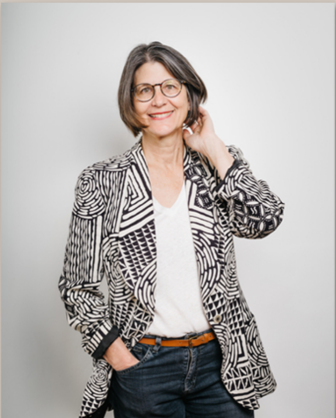
*All images courtesy of the respective recording labels.


